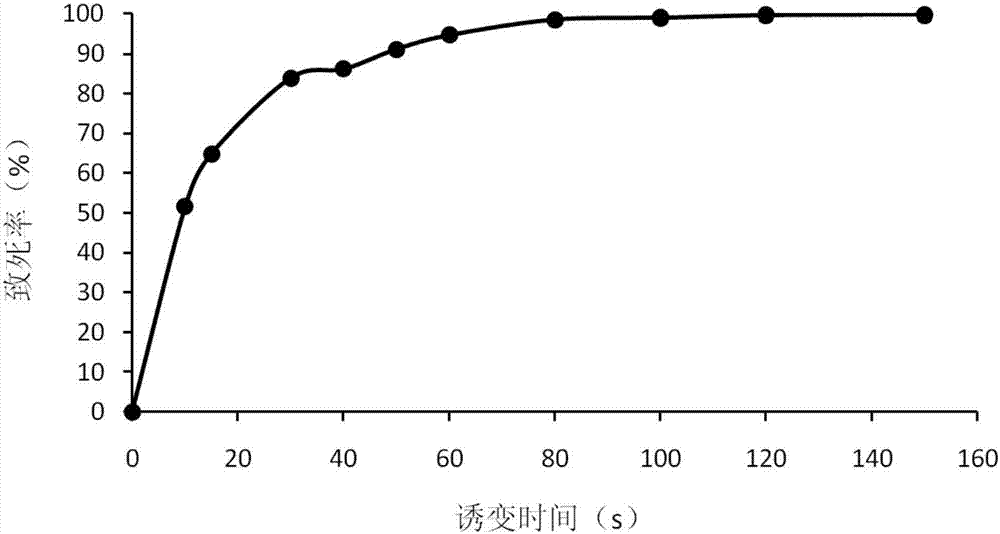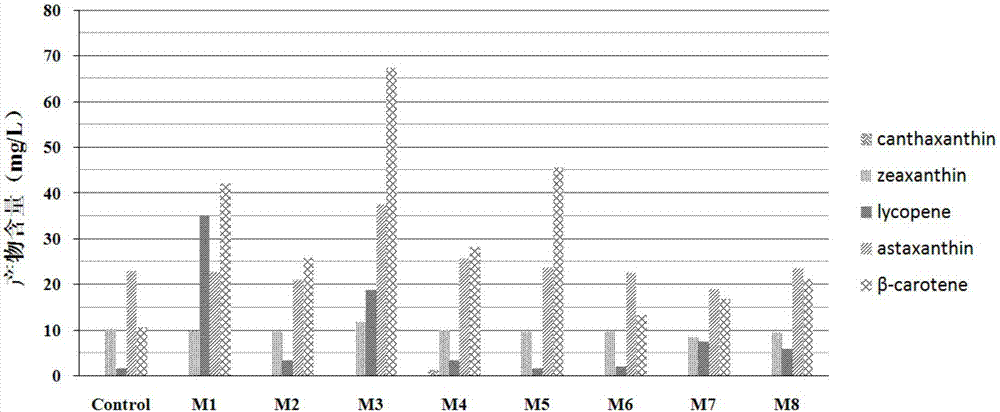Bacterial strain and application thereof
A strain and seed technology, applied in the field of microorganisms, can solve the problems of complex production process, monopoly of production technology, and long cultivation cycle of Haematococcus pluvialis, and achieve the effect of simple operation, low cost, and excellent genetic stability
- Summary
- Abstract
- Description
- Claims
- Application Information
AI Technical Summary
Problems solved by technology
Method used
Image
Examples
Embodiment 1
[0031] Embodiment 1: the acquisition of SyBE_Sc2110M3 bacterial strain
[0032] Atmospheric and Room Temperature Plasma (ARTP for short) consists of a plasma generator, a helium storage tank, a control system and a disc-shaped metal iron sheet. The plasma generator produces a plasma rich in various high-energy active particles by radio frequency glow discharge
[0033] (including helium atoms, oxygen atoms, nitrogen atoms, OH radicals, etc. in an excited state). The active particles cause damage to the genetic material of the strain, thereby inducing biological cells to start the SOS repair mechanism. The SOS repair process will generate a variety of mismatched sites, so it is easier to obtain mutagenized strains with diverse traits, and finally stable genetics to form mutagenized strains.
[0034] The operating parameters of the ARTP mutagenesis experiment are as follows: output power 120W, treatment distance 2mm, gas flow rate 10L / min. In order to determine the appropriat...
Embodiment 2
[0045] Example 2: Fermentation of bacterial strains
[0046] The astaxanthin yields of the control strain (SyBE_Sc118059) and the mutant strains (SyBE_Sc2110M1-SyBE_Sc2110M8) were compared by fermentation.
[0047] Wherein the seed medium is SC drop-out medium, composed of yeast nitrogen source 6.7g / L, amino acid default (drop-out) mixed powder 2g / L, glucose 20g / L, pH value is 6.0-6.5; fermentation culture The base is composed of 40g / L glucose, 20g / L peptone, 10g / L yeast extract powder, and the pH value is 5.0-5.5.
[0048] Inoculate the above-mentioned strains in 3mL primary seed culture medium, cultivate them at 30°C and 250rpm for 20-24 hours, and use the bacteria concentration OD of the primary seed medium 600 =0.1 were respectively inoculated in 5mL secondary seed culture medium, and cultivated for 14-16 hours at 30°C and 250rpm. 600 =0.05 is inoculated in 50mL fermentation medium, 30 ℃, 250rpm fermentation culture, the thalline density (OD 600 ) and astaxanthin produc...
Embodiment 3
[0049] Embodiment 3: the yield determination of astaxanthin
[0050] Determination method of astaxanthin: the cell density reaches OD during the fermentation process 600 At 23 o'clock, two equal parts of the fermentation broth were taken, centrifuged at 4000 rpm for 1 min to collect the bacterial cells, and washed twice with water. One part of the cells was dried at 80°C until constant weight, and weighed to calculate the dry weight of the cells; the other part of the cells was used for product extraction. The specific method was: resuspended cells with 3M pre-cooled HCl, placed in a boiling water bath Boil in medium for 3 minutes, then immediately ice-bath for 3 minutes; centrifuge the broken cells at 12,000 rpm and 4°C for 4 minutes, discard the supernatant, wash twice with water, add acetone, and vortex for 10 minutes; finally collect the acetone phase by centrifugation, and use a 2 μm organic filter membrane After filtration, it is detected by ultraviolet liquid phase, an...
PUM
 Login to View More
Login to View More Abstract
Description
Claims
Application Information
 Login to View More
Login to View More - R&D Engineer
- R&D Manager
- IP Professional
- Industry Leading Data Capabilities
- Powerful AI technology
- Patent DNA Extraction
Browse by: Latest US Patents, China's latest patents, Technical Efficacy Thesaurus, Application Domain, Technology Topic, Popular Technical Reports.
© 2024 PatSnap. All rights reserved.Legal|Privacy policy|Modern Slavery Act Transparency Statement|Sitemap|About US| Contact US: help@patsnap.com










